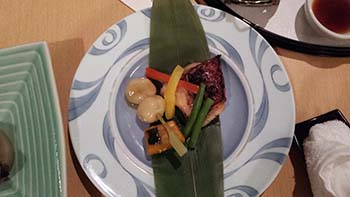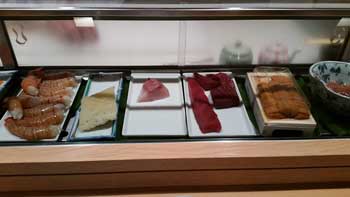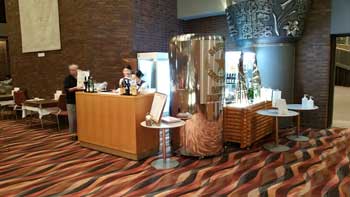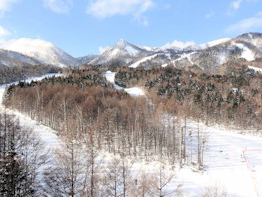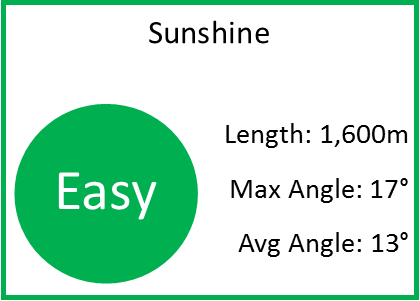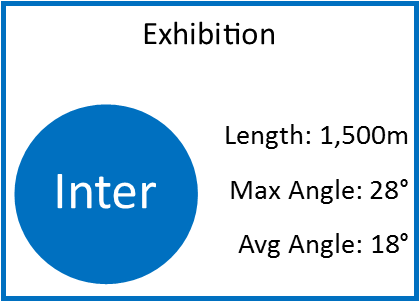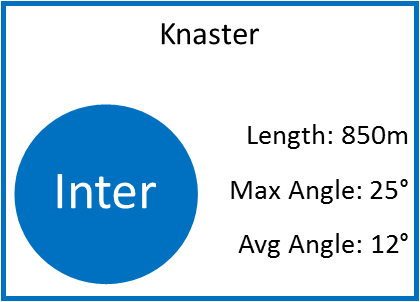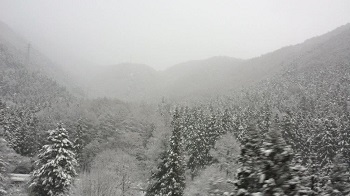Ski Japan

Furano
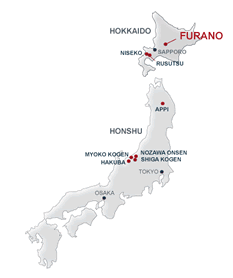 Furano is one of Japan's most famous ski resorts, although relatively little is known about it outside of Japan. Situated in the middle of Hokkaido, Japan's northernmost island, Furano benefits from Siberian storm systems that pass over the Sea of Japan and then dump the lightest and driest snow in all of Hokkaido - and 9 meters of it each season.
Furano is one of Japan's most famous ski resorts, although relatively little is known about it outside of Japan. Situated in the middle of Hokkaido, Japan's northernmost island, Furano benefits from Siberian storm systems that pass over the Sea of Japan and then dump the lightest and driest snow in all of Hokkaido - and 9 meters of it each season.
The Furano Ski area is made up two zones, the Kitanomine zone (Mid. Dec - Late Mar) and the Furano zone (Late Nov - Early May). Both areas have a variety of accommodation options and the town of Furano is only a 3 min shuttle from the Kitanomine zone and a 6 min shuttle away from the Furano zone, and is home to a wide array of restaurants and bars and all the services you would expect to find in a town. Both of these zones can be accessed on the one pass and are serviced by 11 lifts. Furano has an abundance of varied terrain for every level of skier and snowboarder and a vertical drop of over 950 meters making it one of the steepest mountains in Hokkaido.
There are a number of restaurants and cafeterias open on the mountain during the ski season. At the base of both the Kitanomine Gondola and the Furano Ropeway (cable car), there are decent restaurants where you can get a wide variety of good, hearty and healthy meals. At the top of the ropeway in the Furano Zone there is also a small European style café restaurant with a fireplace to sit by. There are a variety of choices for all diets and tastes if you look for it and all the food is reasonably priced. There is also food, drinks and beers available at vending machines right across the hill at different points. All drinks are also very reasonably priced. At the base of the Kitanomine gondola you can find the Snow Dome Festival site. This is a great area to grab a bite to eat after skiing, have a relaxing drink, hot wine, beer or hot chocolate, and unwind in a small country festival atmosphere.
Info at a Glance
Two ski-in, ski-out Prince Hotels are located on the mountain, and the ski area shares a common lift pass with two nearby ski resorts. The New Furano Prince Hotel is the newer of the two hotels, and is also much larger than the Furano Prince Hotel. Located in the heart of the Furano Zone it is an easy ski passed two chair lifts to the Rope-way. The Furano Prince Hotel is located in the Kitanomine Zone with easy access to the lifts. A semi-regular hotel bus connects the two hotels. Outside of these two Prince hotels there are numerous smaller hotels, motels, and pensions located on close to the slopes or in the downtown area.
There are a number of restaurants at the New Furano Prince that offer a both Western and Japanese food options;
- Main Dining Hall - 12th Floor (seats 110).This is the hotel's signature restaurant. The menus are seasonal and are planned around Hokkaido produce and also feature local Furano ingredients.
- Top of Furano - 12th Floor (seats 61). Situated on the top floor of the hotel, offers a relaxed and cozy place to unwind and enjoy a drink.Indulge your tastes in fine wine and spirits from around the world.The lounge offers magnificent panoramic views of the night skiing in winter.
Local Furano Bars & Restaurants
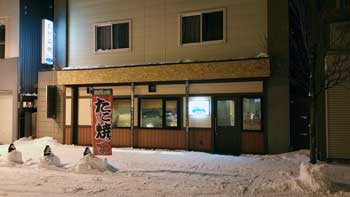
Osaka Style Okonomiyaki (Japanese style pancake - Kansai) specialty restaurant that allows you to cook your own meal on a hotplate attached to your table. The Tokyo style Monjya-yaki and Osaka Takoyaki (octopus leg balls) can also be ordered and made on the hotplate. This restaurant is popular both with locals and out of town visitors. There is no better way to immerse yourself in Japanese culture than coming out and learning to cook your own meal with the locals at Senya.
We did OK with the okonomiyaki cooking - it's fairly straight forward. We did, however, need help with the takoyaki. There is definately an art to rolling the balls. Luckily the owner was on hand to help out, and fix my mess.
Okonomiyaki Senya is close by Bus Stop F - see Google Maps
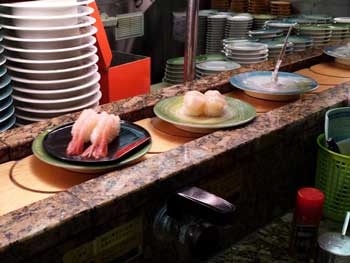
Kaiten Zushi Topical is the only sushi train in Furano, and is a very popular eating spot for the locals. Its decor and use of color may feel like you've stepped into a restaurant from the 1980's, but with a wide variety of sushi available on the menu, 'Topical' will not disappoint. Be warned, Saturday and Sunday nights are very popular with the family crowds, so go before or after the busy dinner hours.
Kaiten Zushi Topical is close by Bus Stop H - see Google Maps
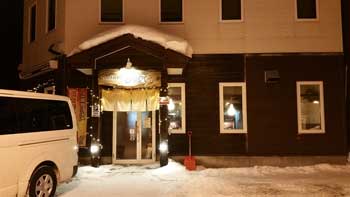
Friendly Teppan Yaki Restaurant specializing in the Japanese style pancake "okonomiyaki" (Kansai style) and flame seared spare ribs. All dishes are prepared with local ingredients and the drink menu features Furano wines. The owner has spent considerable time in Canada and New Zealand, and enjoys chatting with his customers as he prepares the meals in front of everyone's eyes. Meals can be specially prepared for vegetarians and those with allergies. There is also a loft space with 3 computers for free internet and skype use.
Teppan & Okonomi-yaki Masaya is close by Bus Stop F - see Google Maps
Kiroro
 Kiroro is a smallish ski resort on the Northern island of Hokkaido. Close to Niseko it enjoys mountains of snowfall (approx 12m per year), without the crowds and has that family friendly feel. Less well known, Kiroro is the hidden gem of the region, only an hour North-East of Niseko. Usually receiving more snow than its sibling resorts, locals come to Kiroro to escape the lift lines and find deep untracked tree-skiing. Lift lines are rare and even when the snow does stop falling, fresh tracks can be found for days. There are 21 runs ranging from 400m-4,050m in length, with a good spread of difficulties, split almost evenly between green, red (blue), and black.
Kiroro is a smallish ski resort on the Northern island of Hokkaido. Close to Niseko it enjoys mountains of snowfall (approx 12m per year), without the crowds and has that family friendly feel. Less well known, Kiroro is the hidden gem of the region, only an hour North-East of Niseko. Usually receiving more snow than its sibling resorts, locals come to Kiroro to escape the lift lines and find deep untracked tree-skiing. Lift lines are rare and even when the snow does stop falling, fresh tracks can be found for days. There are 21 runs ranging from 400m-4,050m in length, with a good spread of difficulties, split almost evenly between green, red (blue), and black.
Getting here is relatively easy. There are regular shuttles from Chitose airport that deliver you right to the door. The last one leaves at 5:40pm, so if your flight arrives later than that then it's a train/taxi trip. Board the JR Rapid Airport headed OTARU, for ¥1,590, but get off at Otaruchikko - 2 stops before Otaru. This train stops many times on the way and takes approx 75mins. Once at Otaruchikko, make your way to the South exit and grab a taxi to Kiroro. It takes about 50mins and should cost approx ¥7,000. It is not that far to Kiroro but in winter the drive is slower due to the road conditions.
Info at a Glance
There are two hotels at Kiroro, both part of the Sheraton group. We stayed at The Kiroro, a Tribute Portfolio Hotel, the other is Sheraton Hokkaido Kiroro Resort. The Sheraton is a ski-in/ski-out hotel, while the Tribute is 1 km down the road from the slopes. There is a shuttle bus that runs between the Mountain Center and the Tribute every 10mins between 8am-9pm. Then after 9pm it is every 30mins until midnight.
The Staff were very friendly and helpful, and there is a good mix of English speakers. The rooms were a good size for Japan, and quite functional. The Wi-fi was good throughout the hotel, with only minimal slow periods during heavy use.
< br/>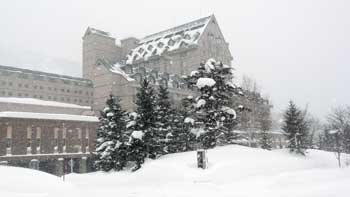
The Kiroro, a Tribute Portfolio Hotel (formerly the Piano Hotel), is a reasonably lavish hotel with 282 hotel rooms across 13 floors. There are a range of western room standards and Japanese/western combo rooms. All rooms are well appointed, spacious and have ensuites, and the upscale Hollywood rooms have mountain views from the bathtub! The hotel has a range of restaurants including a delightful Italian restaurant, a sushi restaurant, and a casual buffet eatery. The hotel also has loads of facilities including a day spa, swimming pool, onsen, entertainment complex and a few shops.
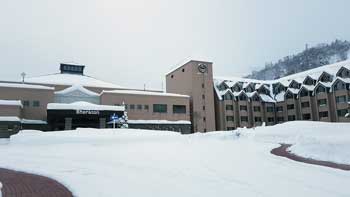
Whilst not as glamorous, the Sheraton Hokkaido Kiroro Resort also provides a high standard of accommodation, and the ski-in ski-out convenience is fantastic. The Mountain Hotel has 5 floors with 140 rooms that provide a spread of Western and Japanese style accommodation. The hotel has an upscale buffet restaurant and easy access to the facilities of the Resort Centre.
The Tokiwayu Spa is directly connected to both the ski slopes and hotel and is fully equipped with indoor baths, cold-water baths, open air Jacuzzi and saunas. Best of all it is free to guests staying at the Sheraton Hokkaido Kiroro Resort.
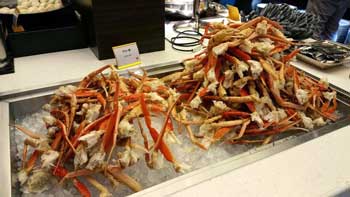
There are five restaurants at the Tribute;
- POP - is a buffet restaurant. The nightly buffet is ¥5,000 (as at December 2016) and has a good mix of Asian and Western foods. For seafood lovers, there is a huge bowl of crabs legs. The meat choices are is excellent, tender, and very tasty. For me the best bit was the soft serve ice cream dispenser!
- ALLA MODA - Italian.
- FUGA - Japanese
- YANSYU - Charcoal Grilled Dishes
- SYUNSAI - Japanese
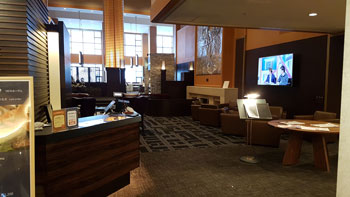
There are three restaurants at the Sheraton;
- Rivierouge Restaurant - is a buffet restaurant. The nightly buffet is ¥4,800 (as at December 2016) with a similar offering to "POP" at the Tribute. In fact, for the sake of an extra ¥200 POP is a better choice.
- Robata Grill "Hokki" - Japanese. This restaurant has a Robatayaki (Japanese-style) grill counter seats, where you can enjoy watching the creative cuisine of a master chef. Choose from various seating options including tables, raised tatami-floored seating, or even a private Japanese-style room. These rooms can also be used for traditional Japanese "Kaiseki" banquets (a sumptuous traditional set meal served on individual trays). In addition to full-course meals, enjoy creative À la carte dishes and seasonal specialties.
- Cafeteria "Lumiere" - this food court style cafeteria offers heart-warming local favourites such as Hokkaido ramen, bowls of seafood-topped rice and Japanese curry. Lumiere is also well stocked with beverages including Hokkaido-only Sapporo Classic Lager, wines, and non-alcoholic drinks. Lunch 10:30 to 16:30 *Open during ski season only.
- Lobby Lounge - Designed in the style of an alpine ski resort, the open and spacious lobby is a place for guests to while away some moments as they please. The restaurant, lounge and bar all blend into one open space that links directly into the mountain center. Happy hour drinks run from 3:00-5:30pm where Draft beer and hiuse wine are reduced to ¥500.
Not much. This is probably the biggest negative of Kiroro, the lack of nightlife. Whilst this undoubtly helps keep the resort off the radar of the tourist hoards, it also makes it a little dull at night. There is of course the option for a day trip to Otaru - the hotel provides a free shuttle several times a day. It is possible to visit Sapporo, and even as far as Asahakawi in a day. We visited the lovely seaside town of Yoichi, south of Otaru, and spent the day walking around. The Tribute has a Onsen and Public Bath on site.
Tomamu
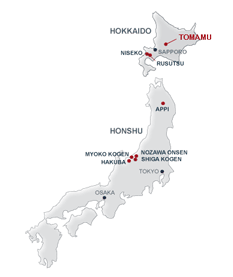 Tomamu Ski Resort in Hokkaido is the most extravagant of the Hokkaido ski resorts, with a 50 metre wave pool, glamorous restaurants and peculiar looking sky-scraper hotel towers. When you see the size of the hotel towers at the base, you’d think that the Tomamu ski area must be the size of Whistler Blackcomb. Then you remember you’re in Japan where the ski resorts are only small to medium sized and Tomamu Ski Resort is no exception. The Tomamu ski resort also caters really well to families and the young at heart, with an adventure terrain park and a kids-specific park.
Tomamu Ski Resort in Hokkaido is the most extravagant of the Hokkaido ski resorts, with a 50 metre wave pool, glamorous restaurants and peculiar looking sky-scraper hotel towers. When you see the size of the hotel towers at the base, you’d think that the Tomamu ski area must be the size of Whistler Blackcomb. Then you remember you’re in Japan where the ski resorts are only small to medium sized and Tomamu Ski Resort is no exception. The Tomamu ski resort also caters really well to families and the young at heart, with an adventure terrain park and a kids-specific park.
Officially the ski resort is 145 hectares in size (which probably only refers to the piste) with 28 courses (ie trails) and a vertical drop of 699 metres (540-1,239m). The ski area offers a variety of terrain including a great beginner area, various groomers for intermediates, and a couple of advanced mogul runs. The "expert" courses and off-piste skiing are certainly a drawcard for the advanced skier and snowboarder, whilst the sidecountry and backcountry areas around Tomamu are a major bonus.
Info at a Glance

There are two hotels at Tomamu, both part of the Hoshino Resorts group. We stayed at 'The Tower' on both our visits. It is the 'budget' hotel for guests who are looking for an active holiday at a reasonable price. The Tower - or actually Towers (there are two) is conveniently located in the center of the resort, close to the restaurant mall Foresta Mall and the golf course. They are the two towers (green and brown) in background of the photo.
The other hotel is the Risonare Tomamu - also comprised of two towers - shown in the foreground of the photo. The Risonare Tomamu is an all-suite hotel, located on an elevated site in the resort surrounded by coniferous trees. Each room is 100 square meters or larger with a sauna and a jacuzzi with a view.
There are loads of restaurants at Tomamu. All are connected to the resort, which allows the convenience of room charging meals and drinks. Below are a couple of our favorites;
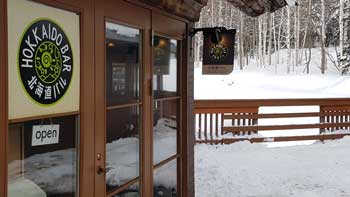
Hokkaido Bar - Charcoal grilled dishes and wines, open for lunch and dinner. This is a great little restaurant with a good selection of Yakitori and 'Bowl' dishes, e.g. Pork Bowl. At lunch time a selection of their best meals are available as a set; with miso, salad, and pickle, at no extra charge.
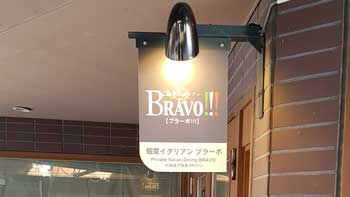
Bravo - Italian style restuarant, open for lunch and dinner. Officially listed as Cheese-Fondue Dinning this restaurant serves a range of pasta dishes, pizza, and cheese fondue dishes. It also offers take-away pizza for those preferring to dine in their room. We found it very busy at lunch time with a 20-30 minute wait each day.
Remembering this is a family orientated resort, it's not surprising that there is a lack of bars, clubs etc. There are still, however, a few things to do at night.
Ice Village - is created each winter and is definately worth a visit. The village contains a number of attractions;

- Ice Chapel - A chapel made of one single unbroken piece of ice. From the altar and crucifix, to the wedding aisle and benches, everything is made of ice and snow.
- Ice Hotel - everything in the Hotel is made from ice; the ice bed, ice sofa etc.
- Bar Icewood - the ice bar offers you cocktail drinks of your choice served in a glass made of ice. they're not cheap, but it's worth having at least one.
- Ice Dining White Pot - you can the hot "Northern Stew" in this ice restaurant.
- Ice Haute Couture - a display of glittering ice-made wedding dresses and jewelery.
- Snow & Ice Studio - ice-made glass and snow crystal-related works by the experts are displayed here.
- White Chocolatory - a white chocolatier based on the an ice theme. There is also hot chocolate best and marsh mellow roasting.
- Ice Florist - a florist decorated with all kinds of colorful ice flowers.
Photos
Shiga Kogan
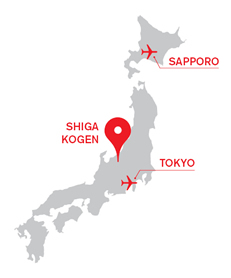 Shiga Kogan is Japan’s largest ski resort. Twenty-one interlinked ski areas provide many options, from long cruisers to challenging moguls, from powder bowls to beginner slopes. And one lift ticket gives you access to 71 lifts, gondolas and ropeways. As with a lot of resorts in Japan - the snow conditions are amazing. The extensive lift network enables skiers and snowboarders to easily move around from one resort to the next or there is a shuttle bus running between each resort if you do not want to ski. There are certain areas in Shiga Kogen for Skiers only. Snowboarding is at times is also restricted when the ski runs are being used for school excursion programs.
Shiga Kogan is Japan’s largest ski resort. Twenty-one interlinked ski areas provide many options, from long cruisers to challenging moguls, from powder bowls to beginner slopes. And one lift ticket gives you access to 71 lifts, gondolas and ropeways. As with a lot of resorts in Japan - the snow conditions are amazing. The extensive lift network enables skiers and snowboarders to easily move around from one resort to the next or there is a shuttle bus running between each resort if you do not want to ski. There are certain areas in Shiga Kogen for Skiers only. Snowboarding is at times is also restricted when the ski runs are being used for school excursion programs.
The northern area leads to Oku Shiga Kogen and is flanked by a number of 2000 m high peaks providing an immense area for skiers and snowboarders to explore. The northern area's Higashidateyama Resort hosted the slalom and giant slalom events of the 1998 Nagano Winter Olympics. Most of the ski areas are connected such that you can easily travel between them on ski or snowboard; however, there is also a shuttle bus that serves the resorts from December to early May (free for lift ticket holders).
Visitors to Nagano can also see a range of fascinating cultural sights. Apart from the 3000 metre Japanese Alps, there is the World famous Jigokudani Monkey Hot Springs, where wild snow monkeys can be seen bathing in the natural hot springs. Or visit the Matsumoto castle or Zenkoji Temple . Be sure not to miss the Wasabi farm where this amazing flavour is used in a variety of different foods - even ice cream!
Info at a Glance
We stayed at The Shiga Kogen Prince Hotel West Wing as it is one of the top hotels in the Shiga Kogen Resort. Located at the impossible to pronounce Yakibitaiyama, this hotel is a true 5 star, ski in / ski out resort hotel. Rooms look out over the ski slopes, and up to the 2,000m peak of Mt Yakibitaiyama. The hotel has several restaurants, or you can move to the nearby Eastern wing for even more options. The resort in front of the hotel takes a day to explore all runs, while the same lift pass is valid at all Shiga Kogen Ski Areas.
There are a number of restaurants across the 3 Shiga Kogen Prince Hotels.;
- Main Dining Room - East Building (seats 222). - For lunch, enjoy Japanese and Western favorites from the a la carte menu in cozy surroundings as you look out over a winter wonderland. For dinner, enjoy a leisurely meal of dishes that make the most of local ingredients, including popular Italian dishes and Japanese favorites such as shabu-shabu.
- Dining Room - South Building (seats 202).Enjoy a Japanese, Western, Chinese-style buffet in elegant surroundings with a view of a silver birch wood.
- Restaurant Westside - West Building (seats 804). Enjoy a relaxing meal in the casual surroundings of this spacious restaurant with large windows that look out over the snow
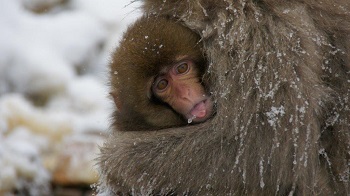
The Jigokudani Monkey Park offers visitors the unique experience of seeing wild monkeys bathing in a natural hot spring. The park is inhabited by Japanese Macaques, which are also known as Snow Monkeys. It is located in the monkey's natural habitat, in the forests of the Jigokudani valley in Yamanouchi, not far from the onsen towns of Shibu and Yudanaka.
The park has one man-made pool around which the monkeys gather, located a few minutes' walk from the park entrance. Visitors will likely already encounter monkeys along the path to the pool. The monkeys live in large social groups, and it can be quite entertaining to watch their interactions. Accustomed to humans, the monkeys can be observed from very close and almost completely ignore their human guests. Naturally, it is prohibited to touch or feed the monkeys.
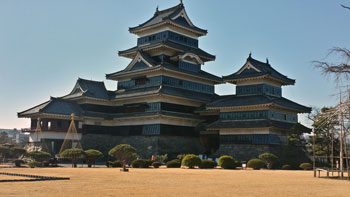
Matsumoto Castle (松本城, Matsumotojō) is one of the most complete and beautiful among Japan's original castles. It is a "hirajiro" - a castle built on plains rather than on a hill or mountain. Matsumoto Castle is unique for having both a secondary donjon and a turret adjoined to its main keep. The castle structures, in combination with their characteristic black wainscoting, give off an air of grandeur and poise.
Matsumotojo's main castle keep and its smaller, second donjon were built from 1592 to 1614. Both these structures were well-fortified as peace was not yet fully achieved at the time. In 1635, when military threats had ceased, a third, barely defended turret and another for moon viewing were added to the castle.
For more information and images of Matsumoto Castle please see the 'Castles' page.
